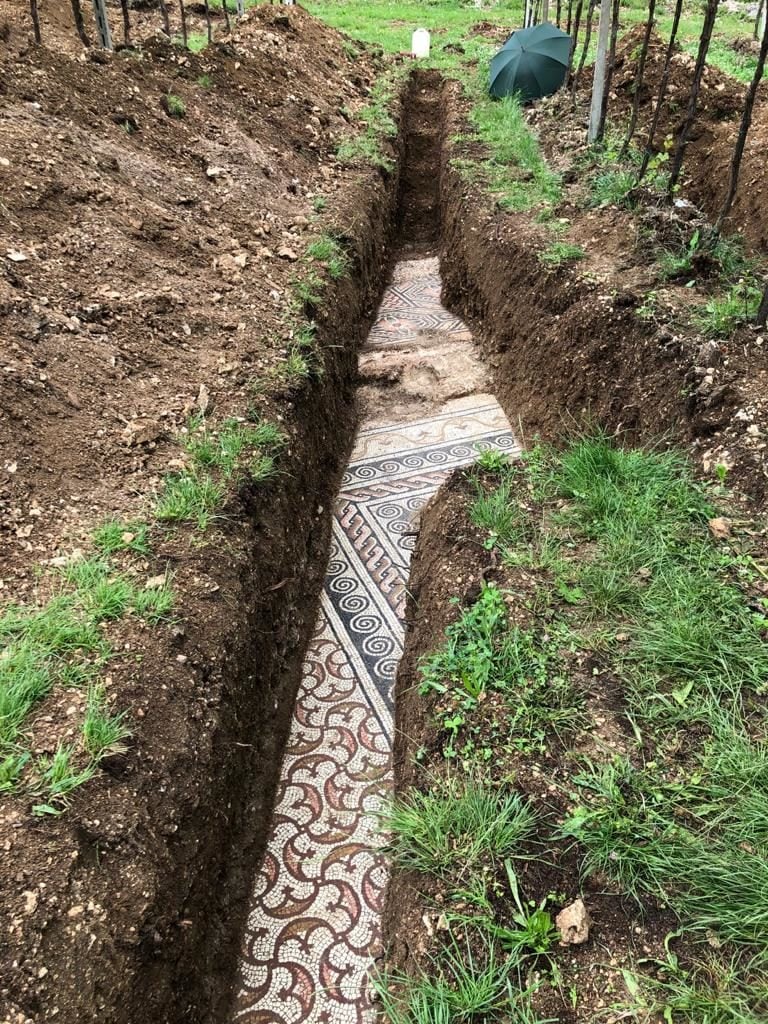Art World
Researchers Have Uncovered a Perfectly Preserved Ancient Roman Mosaic Under a Tangle of Vines in Northern Italy
Archaeologists believe the Roman villa floor dates to the third century AD.

Archaeologists believe the Roman villa floor dates to the third century AD.

Caroline Goldstein

Researchers near the Italian city of Verona have discovered an almost perfectly preserved ancient Roman mosaic floor, dating to the third century AD.
The find, first reported by the BBC, came after “decades of failed attempts,” according to the Facebook page of the town where it was discovered, Negrar di Valpolicella. Teams of archaeologists had been looking for remains of the Roman villa after it was initially unearthed in 1922, but their attempts had yielded few results until now.
The town’s mayor told the newspaper L’Arena that “we believe a cultural site of this value deserves attention and should be enhanced,” echoing the sentiments of the researchers who describe the mosaic tiles as “an archaeological treasure.”
In the summer of 2019, a team of researchers from the Superintendent of Archaeology, Fine Arts, and Landscape of Verona began digging on the site, and conducted subsequent digs in October and February, when the project was halted due to the impending threat of the coronavirus. But when Italy began to reopen, work resumed, and the mosaic was revealed under a tangle of vines.
Images posted to Negrar di Valpolicella’s Facebook page reveal narrow trenches in the ground, under which the mosaic foundation is clearly visible. Though only partial areas of the design can be seen, repeating patterns of geometric shapes in burnt red, green, and black are among them.
Officials say that more research is needed, as well as “significant resources.” But they say they will liaise with the property owners to make the mosaic accessible to the public.